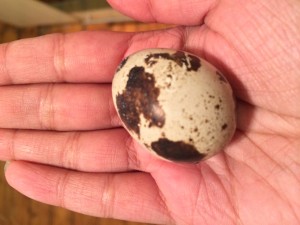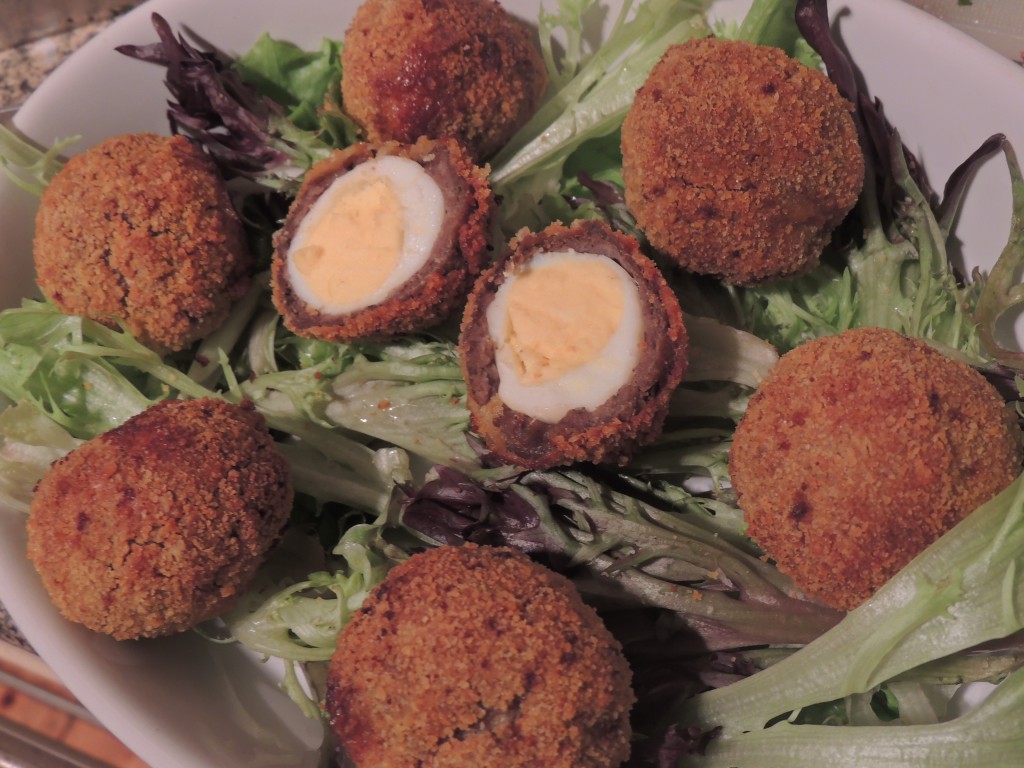Mini Scotch Eggs Recipe
I was always fascinated by the mini scotch eggs available on supermarket shelves. Such a convenient mouthful! So when I discovered that the secret to the tiny eggs were quails and not miniature hens, I had to make it.
However when the box of eggs arrived with my grocery, I had a moment of guilt. Unlike the unfertilized hen’s eggs we eat usually, these tiny eggs were alive. Given the right temperature conditions they could potentially hatch into 12 baby quails but, the delivery man had it in a chilled van so, I don’t think it would have worked. To give them a decent farewell I tried making them into the best scotch eggs I could. No part was wasted, even the shells were fed to my potted plants. My point being, if you eat a living being don’t dishonour its life by wasting any part of it.
My other inspiration for scotch eggs are a particular style of Devilled eggs that we get in India. These are made of lamb mince, mashed potatoes, half of an egg, a layer of breadcrumbs to hold it all together and then fried.
So, instead of using sausage meat for my scotch eggs I used lamb mince, as a nod to my devilled-egg past (pun intended).
Ingredients
1. 150 grams lamb mince. The eggs are so tiny that you really need very less mince but, you can always make meatballs with any leftovers.
2. 8 Quail’s eggs (I had a box of 12, I broke 2 while shelling, ate two to taste and the rest are in the picture below)
3. Golden bread crumbs
4. 1 normal chicken egg for binding
5. 4 -5 table spoons of plain flour
6. Salt and pepper
7. I flavoured my scotch eggs’ mince with rosemary and thyme because these flavours go very well with lamb
8. A bag of salad leaves for presentation and so that you don’t feel guilty about the eggs!
Recipe
I put the minced meat in the microwave for five minutes before flavouring it. This helps soften the meat and it binds better. Then add all the seasoning and 2 tablespoons of flour and knead the meat into a dough-like consistency.
Then comes the shelling of the eggs! Quail’s eggs are very delicate and you don’t want a bouncing rubber ball inside your scotch egg, so, do not boil the eggs for more than 2 minutes. Quickly take them out and plunge them under a running cold water tap. This helps the membrane inside the egg contract and peeling the egg is easier. Tap the egg on all sides and peel off the skin under running water. I suggest keeping a bowl of warm water beside you to unfreeze your hands while shelling the eggs. You can always eat the ones you mess up!
To build it all into a scotch egg, take a teaspoon of mince and make a tiny bowl shape out of it. Put the egg in the middle and then work the dough across it to cover the egg evenly. roll it around on the palm of your hand to shape it.
Once you’ve rolled all the eggs fill one plate with plain flour, one bowl with a beaten egg and one plate with bread crumbs in exactly this order. This will make the assembly much easier and convenient. You should reserve one of your hands for wet ingredients and one for dry to avoid making a gloopy mess . Roll the egg in flour, pat off the excess and roll it in the beaten egg then, roll it on the bread crumbs to cover evenly. Repeat the process for all the eggs. place all the eggs on a baking tray covered with a baking parchment. You shouldn’t need oil because however lean your lamb is, it is still going to release enough fats to bake your scotch eggs. Remember to pre-heat your oven at 150 degrees before putting in your scotch eggs. increase heat to 200 degrees and bake for 20 to 25 mins or until golden brown.
Serving suggestions: Serve with salad leaves and a mustard dressing.
Written by Amrita Dasgupta - Visit my blog for more food and travel stories
I love to travel, discover new things, experience new cultures and then I get back home and experiment with the new food and recipes I discovered on my travels. My blog is about all those life experiences. If you’ve enjoyed this post, keep in touch with Drifting Traveller on Twitter and Facebook or by adding my blog to your RSS feed. Follow my blog with Bloglovin or Networked Blogs! If you really like reading the Drifting Traveller why not share it with people you know who'd like to read it too.




those look and sound so yummy! and i like your drink recipe too!
keep em coming!
happy f day!
These look very tasty and the recipe sounds quite easy to follow too! 🙂
these look lovely! and the perfect size for a tea party or picnic. I will have to try these but making them slimming world friendly.